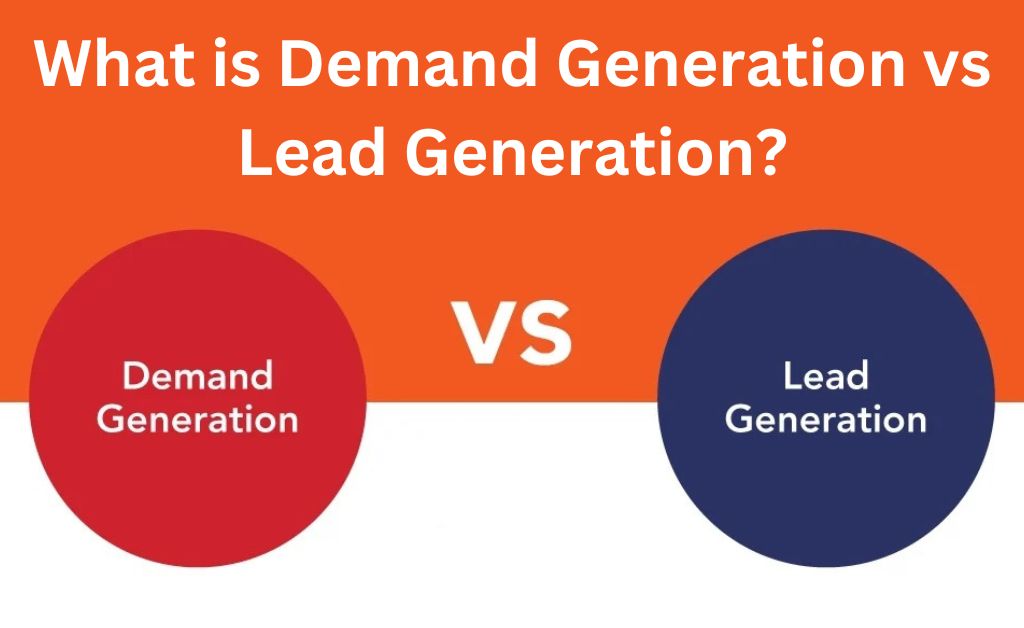
Today, marketing has become more targeted to the specific population that needs it. Instead of focusing on closing sales, sales reps work with their client at the point they are in, and guide them through their decision-making processes.
Demand generation and lead generation are tools that business owners use to carry out marketing strategies to generate revenue and gather prospective customers. While some business owners use demand and lead generation interchangeably, they differ.
This article aims at differentiating between demand generation and lead generation, and giving a detailed explanation of what they entail.
What is Demand Generation?
Demand generation in marketing is helping people know about the product or service you offer and stimulating demand for it. It increases the size of your audience, gives rise to buzz, and increases traffic. It helps your business become known in the market, makes your audience happy, and builds their trust for the goods you sell or services you offer.
In simple terms, demand generation is a data-driven strategy used by business owners to create awareness and interest. Demand generation can be called a trap business owners use to catch potential customers.
What is Lead Generation?
Lead generation is the act of turning the people who are interested in the product you sell or the service you render into your regular customer. As a business owner, you can do lead generation through nurturing new or prospective customers after you have convinced them about your product with your end goal in mind.
A typical lead generation strategy involves using CTAs with lead forms to get your audience’s data, enabling you to send them emails or offers on social media.
People often confuse the differences between demand and lead generation, and mistake them for the same thing. Below are the differences between demand generation and lead generation.
Demand Generation vs Lead Generation
Demand generation is the tool that attracts potential customers to your website to get an introduction to your offer. Lead generation, on the other hand, makes these potential customers your actual customer.
Both demand generation and lead generation complement each other. These two strategies cannot be used alone and depend on one another; this could be why they use these terms interchangeably. So, if you are trying to find the best of the two strategies, you should know that one shouldn’t be used exclusively on its own.
Demand generation feeds into lead generation since not everyone will opt into your product and begin to make purchases at first sight.
Using the funnel analogy, you can say that demand generation is the top of your funnel. In contrast, the evacuation of the funnel content happens at the bottom, representing Lead generation.
To summarize the differences between lead generation, you can say that
- Demand generation increases the awareness of a brand, while lead generation catches the listeners’ information.
- Demand generation tells your target audience about the brand you promote, while lead generation nurtures qualified leads.
- While demand generation builds trust, lead generation shows the brand’s value.
- Another goal of demand generation is to spark the audience’s interest, while that of lead generation is to convert leads to customers.
You can divide the difference between demand generation and lead generation into four stages. These four stages transcend from informational to transactional, and they are:
- Awareness
- Consideration
- Intent
- Purchase
There are different demand generation and lead generation content types that you can use for your marketing with the same goal to expose the product, sell to them, and help them solve their problems.
Examples of Demand Generation Strategies
1. Guest Posting
A guest post is an article written by you but posted on someone else’s website. Business owners use guest posts not only to generate demand for their products but also to capture leads.
So, if you want to improve your product’s search ranking and build authority, guest posting can open your business up to viable prospects.
2. Lead scoring
Lead scoring uses resources to assign value based on your prospective customer’s online or offline behavior. Lead scoring can help you measure where your audience is on their journey with you and their growing sales readiness.
3. Content marketing
Content marketing is the fuel that powers one of your demand generation engines. Your content produces power for the inbound activities, bringing prospective customers into your sales funnel.
The most helpful piece of content marketing is matching content with the audience’s pain point and their position in their purchasing journey.
Examples of Lead Generation Strategies
1. Use of Sales Intelligence
Understanding your prospective customers and them knowing what you do transcends your website. Sales intelligence goes beyond that and helps you generate better leads.
Business owners use sales intelligence to collect valuable information about prospective customers, enabling them to send individualized messages to their prospects. They use this data to identify quality business leads and seal deals.
2. Leverage Search Intent
Leveraging search intent means a business owner can spend less money on generating leads while skipping parts of the sales funnel: awareness, consideration, and conversion.
The first step in the sales process is getting prospects into your funnel. However, leveraging search intent lets you skip the middle and top of the funnel steps. You do this by analyzing the intent of the keyword phrase searched by the potential customer.
3. Launching Paid Media Campaigns
Paid media campaigns are one of the most effective lead generation strategies to promote your product or service. Business owners can subscribe to paid media campaigns on platforms like Facebook, LinkedIn, or Google, allowing them to make sponsored ads that will attract potential customers.
Conclusion
Although people have taken demand and lead generation to mean the same thing, they are different. Lead generation only begins after demand generation has introduced the target audience to the product your offer or the service that you render.
Hence for your business to flourish, you need to have a good blend of the two.
